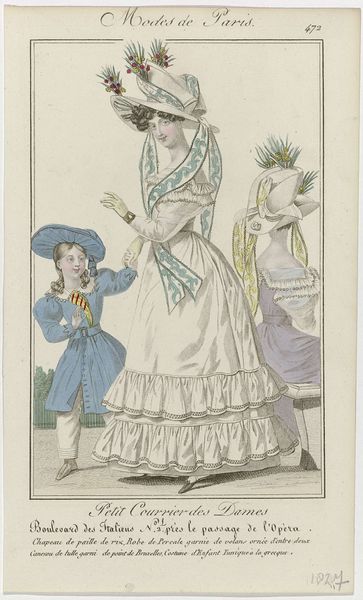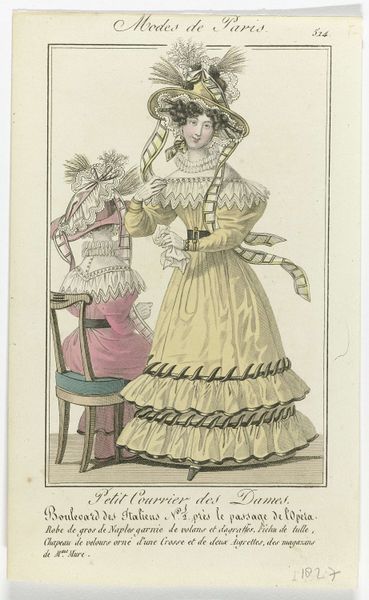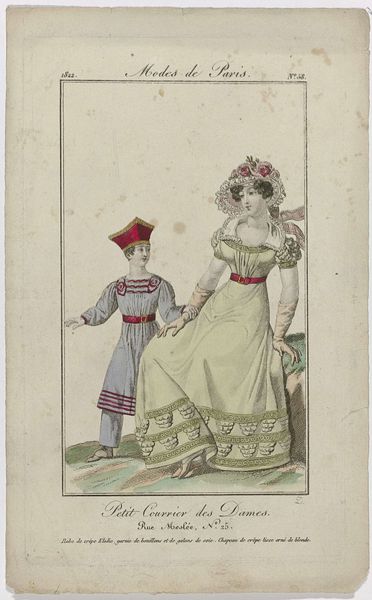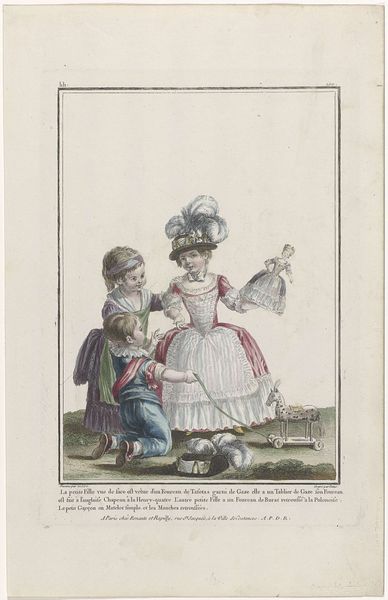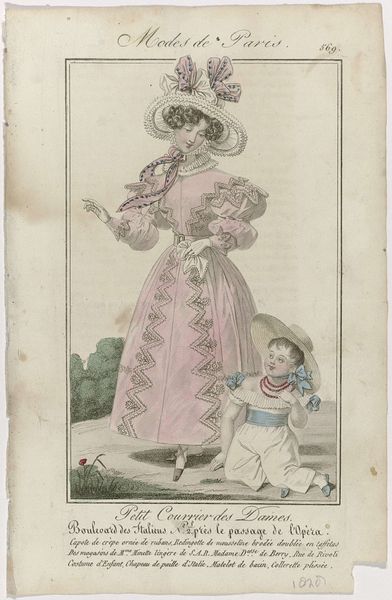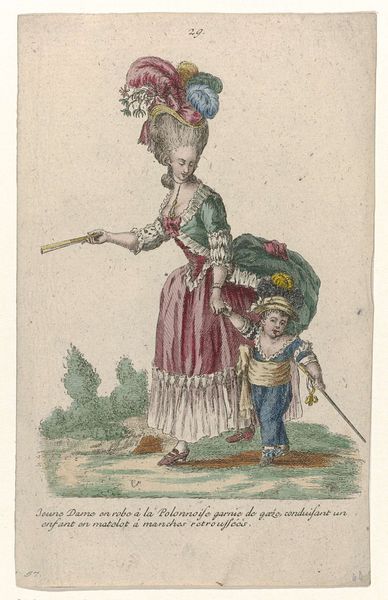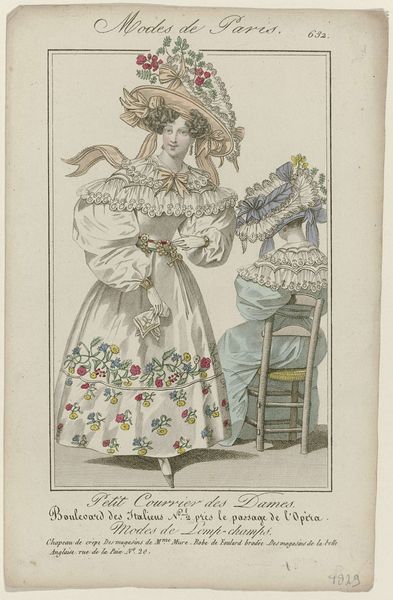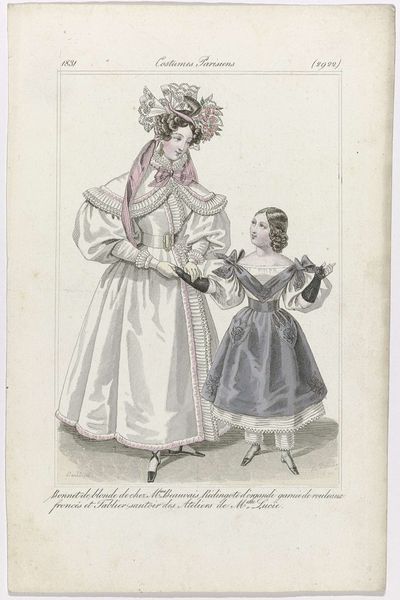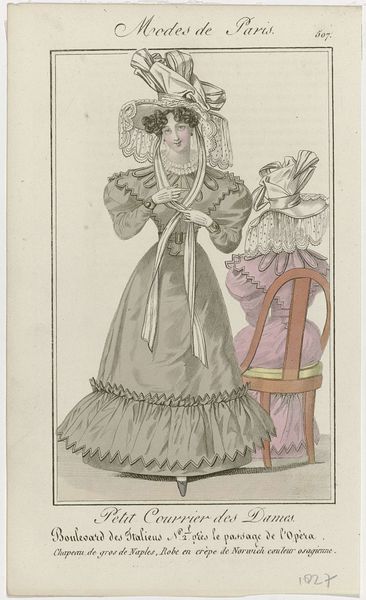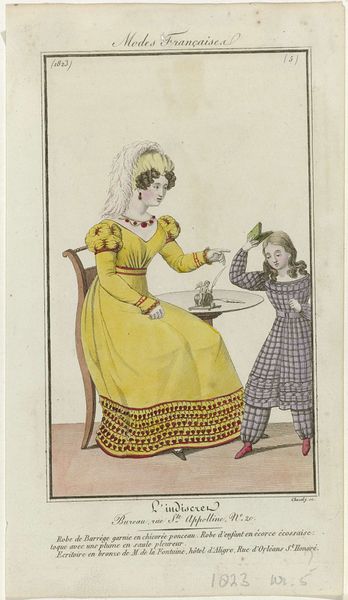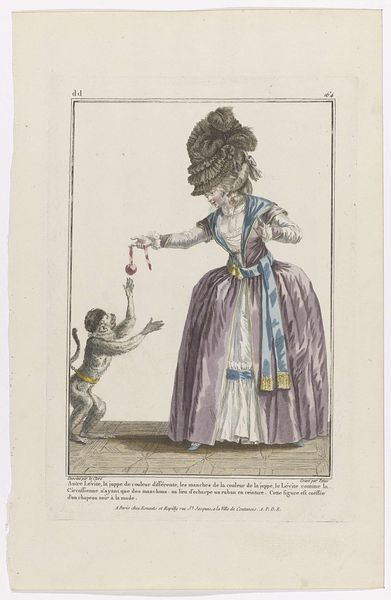
drawing, print, watercolor
#
portrait
#
drawing
# print
#
watercolor
#
historical fashion
#
romanticism
#
watercolour illustration
#
genre-painting
#
dress
#
watercolor
Dimensions: height 208 mm, width 126 mm
Copyright: Rijks Museum: Open Domain
Editor: So, here we have an image called "Petit Courrier des Dames," dated 1826. It looks like a print with watercolor, a fashion plate maybe? It feels so delicate, like a whisper from another era. The colors are faded, almost like a dream. What jumps out at you? Curator: A dream indeed, softly tinted with the aspirations of its time! Look at the attention lavished upon the textiles – the crisp lines of the check muslin gown contrasting the almost frantic trim on her matching hat! What do you think this juxtaposition communicates? Editor: Maybe it’s about showing both the structure and the excess, the day-to-day and the aspirational all at once? The little boy, too; it looks like they have been captured walking on the Boulevard des Italiens. But who was the intended audience? Curator: Excellent point. Certainly the woman who consumed images like this. “Petit Courrier des Dames,” implying a sense of refined leisure and the pleasure of keeping pace with fashionable society. I wonder how such images shape desire in women even now, so many years later. Editor: That’s so interesting – almost like Instagram of its day. This print becomes so much more than a drawing, right? A social mirror reflecting and creating ideas about aspiration and taste! Curator: Precisely! This artwork provides a portal – it shows fashion and how a woman saw herself then, and how women see themselves now. It reflects what could be… Editor: This conversation has completely changed how I see it now! Curator: Wonderful, I was hoping it might shed light on how cultural context can bring additional layers of complexity to the interpretation.
Comments
No comments
Be the first to comment and join the conversation on the ultimate creative platform.
